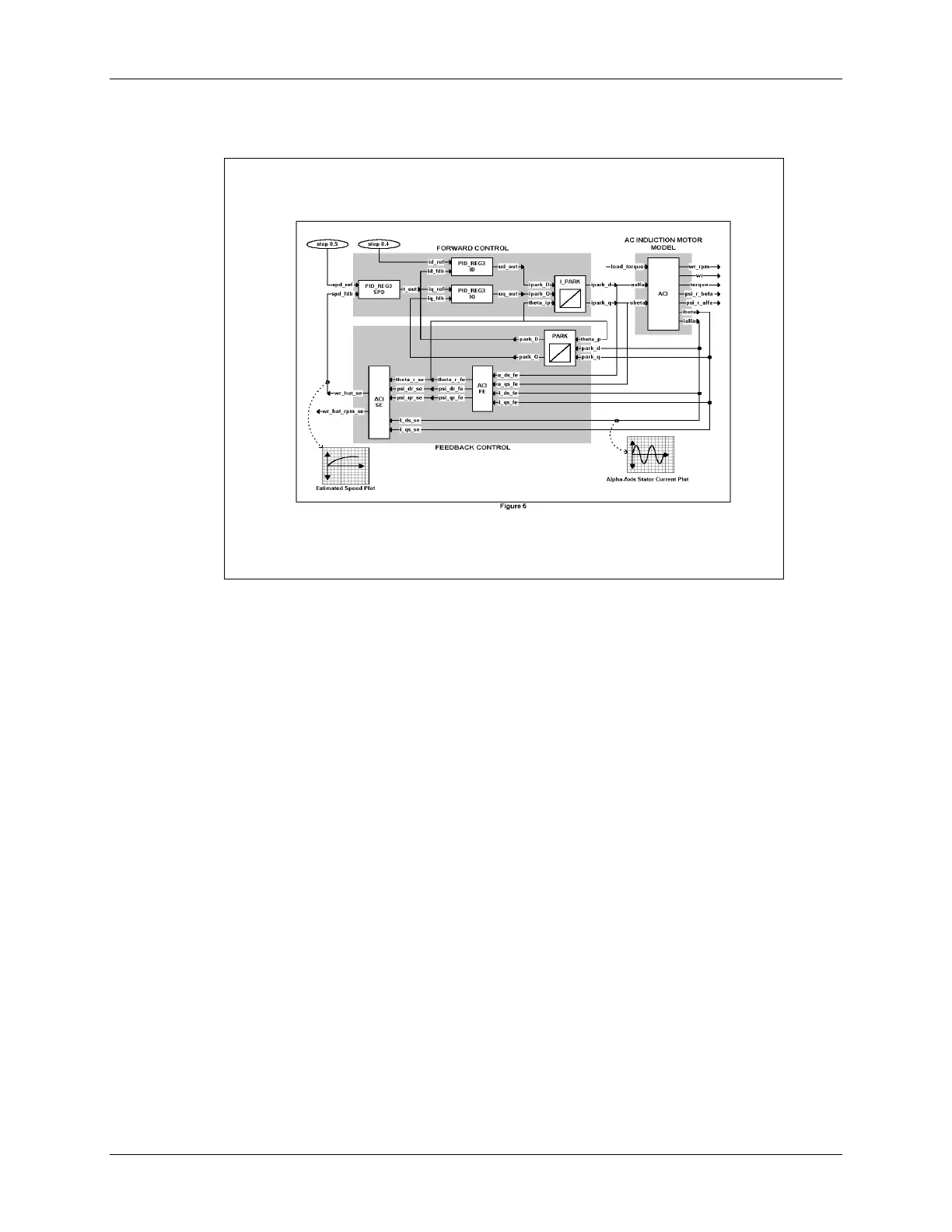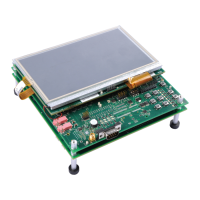AC Induction Motor Example
AC Induction Motor Example
AC Induction Motor Example
AC Induction Motor Example
One of the more complex motor control algorithms
One of the more complex motor control algorithms
Sensorless
Sensorless
, ACI induction machine direct rotor flux control
, ACI induction machine direct rotor flux control
Goal: motor speed estimation & alpha
Goal: motor speed estimation & alpha
-
-
axis stator current estimation
axis stator current estimation
The "IQmath" approach is ideally suited for applications where a large numerical dynamic range
is not required. Motor control is an example of such an application (audio and communication
algorithms are other applications). As an example, the IQmath approach has been applied to the
sensor-less direct field control of an AC induction motor. This is probably one of the most chal-
lenging motor control problems and as will be shown later, requires numerical accuracy greater
then 16-bits in the control calculations.
The above slide is a block diagram representation of the key control blocks and their interconnec-
tions. Essentially this system implements a "Forward Control" block for controlling the d-q axis
motor current using PID controllers and a "Feedback Control" block using back emf's integration
with compensated voltage from current model for estimating rotor flux based on current and volt-
age measurements. The motor speed is simply estimated from rotor flux differentiation and open-
loop slip computation. The system was initially implemented on a "Simulator Test Bench" which
uses a simulation of an "AC Induction Motor Model" in place of a real motor. Once working, the
system was then tested using a real motor on an appropriate hardware platform.
Each individual block shown in the slide exists as a stand-alone C/C++ module, which can be
interconnected to form the complete control system. This modular approach allows reusability
and portability of the code.
8 - 26 C28x - Numerical Concepts & IQmath

